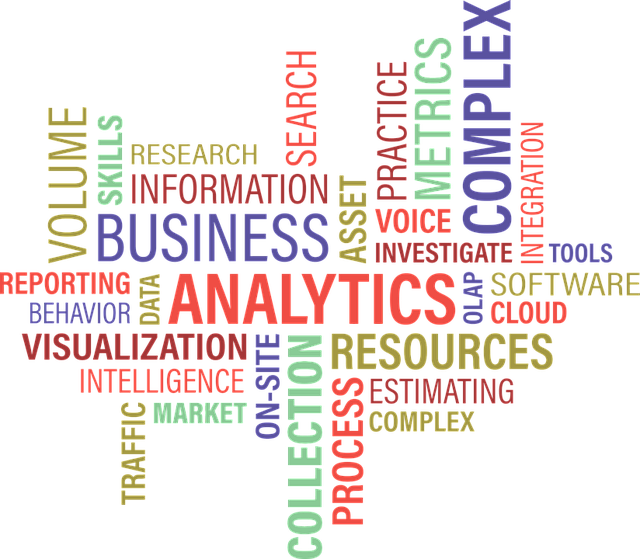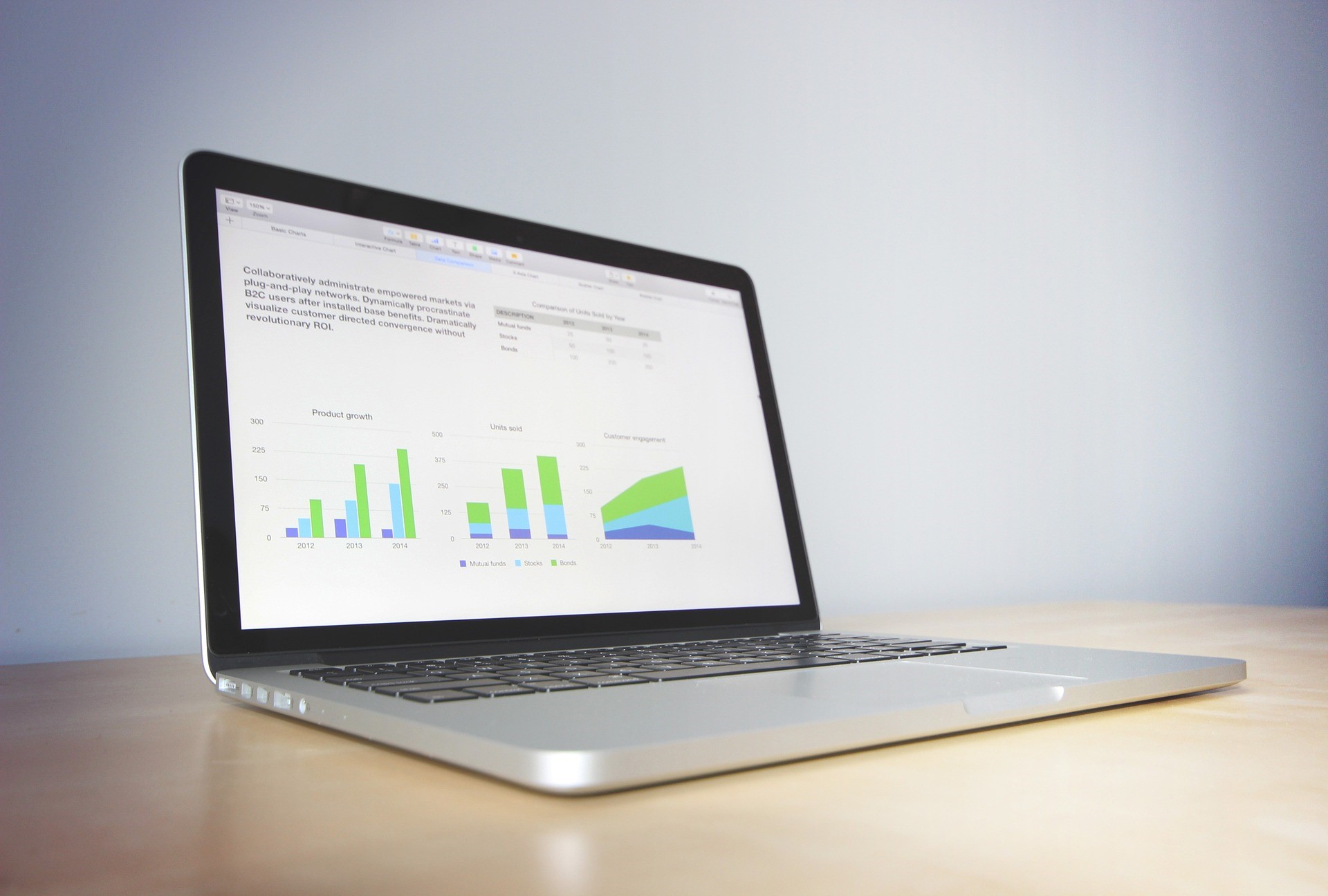

An Enterprise Resource Planning (ERP) solution can be one of the most effective investments that a company can make to enhance efficiency, profitability, and long-term sustainability. However, it is also often one of the most difficult decisions to make, due to the initial effort it takes to implement the software and train staff, as well as the costs involved.
When purchasing an ERP system, there are a number of expenses that have to be taken into consideration beyond just the software. In fact, it is estimated that the actual ERP software only accounts for about 30 percent of the overall expense.
The cost of the actual software will vary based on how dynamic the system needs to be. The more applications that are required and the greater the level of customisation, the more expensive the software. Generally, larger organisations will pay much more than small and mid-sized businesses because they will have to implement a large, highly specialised ERP software solution.
Hardware can take up another 20 percent of the total cost of an ERP system. For small and mid-sized businesses that may not have enough resources to invest in upfront ERP costs, it may make more financial sense to opt for a cloud-based deployment, which involves a software as a service (SaaS) payment model. With a subscription-based ERP solution, no hardware expenses are required, as all the servers and other hardware are housed by the vendor. Also, the maintenance and support costs are generally rolled into the monthly fee. However, cloud-based ERPs are often much ‘lighter’ packages than onsite, so if it’s data-heavy information you’ll need to track, on-site may be a better option or your business.
The more licenses your company requires, the higher your overall ERP costs will be. This is another reason why larger businesses have much larger software expenses. To save on licenses, keep in mind that you don’t need a license for every potential user. You’ll only need to acquire enough for the maximum number of concurrent users.
Whether you are getting your first ERP solution or replacing a legacy system, this is where the bulk of your ERP expenses will go – as much as half of your upfront expenses. Implementation costs cover the following:
Who you choose to take care of your implementation process is going to impact the overall cost. Some ERP vendors will offer implementation services, while others won’t, which means your company could be working with a third-party vendor like an IT provider.
Implementation also includes training costs, an essential area for having a successful implementation process. Research shows that companies who invest heavily in training their staff are more likely to have a successful ERP implementation process. Setting aside less than 13 percent of the overall ERP implementation budget for training is linked to an increased likelihood of going over budget and exceeding project time frames.
One way that businesses can cut these costs is by being as involved in the process as possible. Having an internal project manager from your own staff, as well as a core team that works directly with the ERP vendor, will help the process go more smoothly and will help to prevent the project from going over budget.
To save on training costs, consider preparing several members of your staff to train the rest of your employees. It helps to have several IT professionals or other employees on your team who know your ERP system like the back of their hand. They can not only train others, but they may also be able to help when other staff members run into questions.
The benefits of ERP software include streamlining operations, increasing efficiency, and boosting productivity with a centralised, easy-to-use solution. Because of this, ERP solutions are generally well worth the investment – provided you invest effectively and efficiently in getting the implementation and training processes right from the start. This is the case across the board, from small businesses to enterprise level corporations. To find out how much of a Return on Investment that you may expect from your ERP system, use this tool for finding the ROI of an ERP solution based on your industry.
Learn everything you can about the ERP implementation process and choose a vendor that can answer all your software needs with one integrated, powerful software solution, and you are more likely to benefit immensely from your new system.
If you’d like to speak to our team about how the MYOB Exo or MYOB Advanced ERP systems can benefit your business, get in touch with us today!


How much further could your business go if it was running more efficiently? With a streamlined workflow and many of the costly operational hiccups of day-to-day business eliminated with an Enterprise Resource Planning (ERP) software solution, you will be equipped with the right tools to unlock your organisation’s potential.
Today, many small to mid-sized businesses depend on business management software to get things done, from invoicing to accounting to stock levels to customer management. ERP brings all these solutions into one application, and therefore brings all information into one central hub. This means that an update in sales for example, will also adjust inventory, order management, and financial management. Sometimes described as the nervous system of a business, ERP software allows each area of your business to communicate, relate, and integrate all into one dynamic solution, which has the potential to improve overall operations enormously. Perhaps the greatest aspect of an ERP solution is its versatility; different add-ons can be embedded in the software to suit the specific needs of an organisation – and you can even have custom add-ons designed specifically for your business needs.
Are you considering investing in business management software (like MYOB Exo) but not sure how exactly this software will make a difference? Here are five ways that ERP software can boost efficiency – and your bottom line.
With ERP sofware, it is possible to automate more workplace tasks. With all operational functions rolled into one over-arching management app, you’ll no longer have to spend time ensuring that your stock levels are sufficient in your warehouse, because inventory is automated. Lengthy and cumbersome order fulfilment paperwork can be fully automated as well, as can some facets of marketing, customer service, and accounting. This automation frees up labour hours so employees can work on more productive tasks like research and development and strategic planning.
When all the information that you need about your business can be found through one central platform, you’ll save time looking up data files, cross-checking to ensure that data is accurate, and even searching for lost information. Everything can be found through the ERP software. Having all the data in one place also makes sophisticated forecasting possible – which can help your business form more effective business strategies with a clear picture of the numbers.
This is what really sets ERP software apart from using a series of separate business apps. With a single platform tracking your workflow, you can spot exactly where you’re losing money or wasting resources during normal operations. From poorly used warehouse space to honing in on excess production or long wait times, you’ll be able to recognise where you can make changes to help your business run more efficiently.
Accounting, sales, customer service, and other departments can more easily communicate with each other because everyone is working through a central platform. When someone from sales enters data for example, the accounting department receives the same information, and in real-time. Not only does this make the flow of work between departments easier, but it also reduces the lost time and resources caused by errors, which are an inevitable by-product of using multiple apps.
Many businesses opt to embed a Customer Relations Management (CRM) app in their ERP solution, which can completely revolutionize the way your business interacts with customers. This will make the order management process simple, ensure more accurate inventory updates, and allow customers to keep track of their orders along the way. It also allows your organisation’s customer service team to spend their time interacting with customers, rather than doing the tasks and tracking that your ERP can do. When CRM is separate, managing the customer lifecycle becomes difficult as you would have to track data through the lifecycle from different applications, and then bring this information together in order to make a clear assessment.
Businesses with an ERP solution are operating at a great advantage. The more efficient your business is, the more you are able to excel, and grow. Get in touch with us to learn more about how MYOB EXO can improve your business’ efficiency.

Accounting is a key aspect of any business, so it is important that it is done properly and efficiently. Utilising accounting software can greatly contribute to the process, streamlining your accounting operations so that you can spend more time focussing on other aspects of running your business. Here’s how accounting software can help you:

With traditional paper/manual Excel sheet accounting, each transaction must be entered by hand, often in multiple accounts. Everything must be handled meticulously to ensure that all entries are completed properly. Accounting software makes it easier to get the accounting done quickly. Many software applications automate everything for you, ensuring that each entry is allocated properly with minimal time and effort.
When errors occur in the accounting process, it is often a result of human error. Whether it is through entering data in the wrong column or account, or through mistakes in calculations, the human element greatly increases the risk of discrepancies in the books. With accounting software, you know that calculations will always be done correctly. With many accounting software applications, there are in-built checks that can alert you if a transaction may be entered incorrectly, helping to reduce errors even more.
When tax time comes around each year, many businesses scramble at the last minute to obtain the data they need to lodge their taxes properly. Any errors can result in fines or audits, putting added pressure on your business. Accounting software makes the tax lodging process easier by compiling all of the necessary data for you. In some cases, you can even complete your tax forms directly within the software, making things even easier and saving you a lot of headaches throughout the process.

Knowing exactly what is going on with your business’ finances is crucial to keeping it successful. Creating financial reports can take a lot of time when doing it by hand, which can take you away from the day-to-day aspects of running your company. Instead of taking the time to do this yourself, accounting software is capable of creating detailed reports for you automatically. In addition, the extensive reporting capabilities in most accounting software applications can give you access to data that you would have been unable to examine on your own due to the time involved in completing the calculations.
Forecasting capabilities are one of the most useful features in many accounting software applications. By analysing past data and trends, as well as your sales projections, accounting software can often generate predictions regarding the future cash flow of your organisation. This can be of great assistance in planning future courses of action for your company, such as when would be a good time to invest in an equipment upgrade for example.
As with creating financial reports, developing forecasts can be incredibly time-consuming when done by hand. Having this information at your fingertips, within the software application, can help you to make informed decisions about how to proceed.
Here at Horizon Business Systems, we are committed to providing market-leading accounting software to help businesses all across Australia. Our team of associates would be happy to discuss our products and services with you further to help you understand how we can help you take your business to the next level. Call us at 61 8 9328 1678 or get in touch with us online for more information. Your business’ success is our business, and we will work with you to help make it happen.
Last month we compared the leading Australian Accounting Software for medium-sized businesses.
This month we’re broadening our comparison to look at the top Australian Business Management Software Packages (ERP Software).
Again, the below is just a simple overview of some key features. To really decide the right software package for your business you’ll likely need to do some further research and request a demo for your team to trial. However, the below side by side comparison is a good place to start!
| Provider
|
MYOB | Triumph | Pronto | Greentree |
| Product
|
EXO | Business Management Suite |
Xi | Greentree4 |
| Indicative Cost (per user per month)
|
$100-$145 | $145-250 | $150-200 | $150-200 |
| Suitable for business size
|
A$1m-A$250m+ Annual Turnover | Unavailable during our research | A$20-A$250m Annual Turnover | A$5m-$250m+ Annual Turnover |
| Multiple users permitted?
|
Yes | Yes | Yes | Yes |
| Multiple Companies Supported in Single Account?
|
Yes | Yes | Yes | Yes |
| Multiple Currency Support?
|
Yes | Yes | Yes | Yes |
| Cloud option available?
|
No | No | No | No |
| Onsite option available?
|
Yes | Yes | Yes | Yes |
| Smartphone App Available?
|
Yes | No | No | No |
| FEATURES
|
||||
| Financial Management | General Ledger
Accounts Payable & receivable Profit & Loss Balance sheet Cost centre/profit centre Procurement (requisitions, PO) Project accounting Inventory accounting Services accounting (jobs, timesheet, billing) Bank reconsiliation Bank
|
General Ledger
Accounts Payable & receivable Profit & Loss Balance sheet Cost centre/profit centre Procurement (requisitions, PO) Project accounting Inventory accounting Services accounting (jobs, timesheet, billing) Bank reconsiliation
|
General Ledger
Accounts Payable & receivable Profit & Loss Balance sheet Cost centre/profit centre Procurement (requisitions, PO) Project accounting Inventory accounting Services accounting (jobs, timesheet, billing)
|
General Ledger
Accounts Payable & receivable Profit & Loss Balance sheet Cost centre/profit centre Procurement (requisitions, PO) Project accounting Inventory accounting Services accounting (jobs, timesheet, billing) Electronic Document processing with OCR capabilities and approval routing
|
| HR & Payroll | Human Resource Management
Payroll Time & Attendance Timesheets Timeclock PC Timeclock for remote staff Employee info
|
Time clock
|
Payroll
Timesheets Employee information Leave requests |
Human Resource Management
Payroll Health & Safety Leave planning Recruitment Employee development |
| Job Costing | Job planning and scheduling
Flexible estimating – multiple billing methods (time and materials, as quoted, milestone or claim schedules) Master and sub-job structures for more accurate control over large jobs or projects Customisable alerts to monitor progress Customisable quote forms |
Job planning and scheduling
Base costing on actual cost or charge rate Master and sub-job structures Record Work-In-Progress (WIP) at job or transaction level Create budgets |
Job planning and scheduling
Flexible invoicing or via Claim Schedule Multiple cost centres and budgets per project Project Tasks and milestones Export Project Tasks to MS Project 2013 Master and sub-job structures |
Job planning and scheduling
Timesheets Flexible estimating Budget vs actual Master and sub-job structures Multiple customer invoicing for single jobs Export Project Tasks to MS Project 2013 Customisable alerts to monitor progress
|
| CRM & Sales | Customer activity/notes
Single customer view (orders, sales, credit) Marketing Campaign Management – tracks costs & ROI Social media integration Mobile sales (browser/tablet order/re-order) Real-time stock & finance integration
|
No CRM | Customer activity/notes
Single customer view (orders, sales, credit) Campaigns Mobile sales (browser/tablet order/re-order) Marketing automation
|
Customer activity/notes
Single customer view (orders, sales, credit) Campaigns Mobile sales (browser/tablet order/re-order) Marketing automation
|
| Point of Sale
|
Yes | No | Yes | Yes |
| Built in eCommerce |
Third party integration available
|
No | Yes | Yes |
| Inventory/ Warehouse | Available to order
POS/ e-commerce integration Available to pick Scan pick/ pack/ dispatch control Quality control
|
Available to order
Available to pick On-order /reserved /backordered |
Available to order
POS/e-commerce integration Available to pick Scan pick/ pack/ dispatch control Quality control |
Available to order
POS/e-commerce integration Available to pick Scan pick/ pack/ dispatch control Quality control |
| Integration and support of third party add-ons
|
Yes – Open API | No | Yes – Open API | Yes – Open API |
While the above table gives a snapshot of the availability of some key features, it doesn’t give an in-depth look at the full functionality level in each of these areas, and importantly, how that matches up to your business’ needs.
It must be said, however, that MYOB EXO is often seen as the strongest contender in the game. MYOB is a long established world leader in the ERP market and it is the largest selling mid-sized ERP in Australia & NZ – they’re not a new or start-up business so you can rely on their longevity and stability as a provider for your business.
MYOB also has a strong network of trusted, authorised, local partners and third party MYOB developers (like us here at Horizon Business Systems!) who can offer local support and training and help you design custom add-ons specific to your business needs.
If you’d like to find out more about how MYOB EXO can help your business, don’t hesitate to get in touch with us today!

When choosing an accounting software package for your business there’s a lot of research involved – you’ll need to visit each supplier website and go through their pricing and features in depth to make sure their offering suits your needs.
But it’s also handy to have a quick overview where you can see all the accounting software packages side-by-side and compare their features at a simple level, so we’ve done our best to create a simple overview below.
Some things to keep in mind when reviewing the below comparison table:
| MYOB | Xero | Quickbooks | Reckon | Saasu | |
| Plan we’re comparing | Essentials | Starter | Essentials | Basic with all Add-ons | Medium |
| Cost per month | $35 | $25 | $25 | $20 | $40 |
| Multiple users permitted | Yes | Yes | Yes† | Yes | Yes |
| Cloud-based | Yes | Yes | Yes | Yes | Yes |
| Quoting | Yes | Yes | Yes | Yes | Yes† |
| Invoicing | Yes | Yes | Yes | Yes | Yes† |
| Online Payments | Coming soon | Yes | No* | Yes | Yes |
| Inventory | Yes† | Yes | No* | Yes | Yes† |
| Expenses | Yes | Yes | Yes | Yes | Yes |
| Bank Feed | Yes | Yes | Yes | Yes | Yes |
| Multi-Currency | No* | No* | No* | Yes | Yes |
| Calculate & Track GST | Yes | Yes | Yes | Yes | Yes |
| Payroll | Yes† | Yes† | Yes† | Yes | Yes† |
| Payroll for how many staff? | 1 | 1 | 10 | Unlimited | 20 |
| Leave calculation | Yes | Yes | Yes | Yes | Yes |
| Timesheets | Yes† | No* | No* | Yes | Yes† |
| Mobile Access | Yes | Yes | Yes | Yes | Yes |
| More add-ons available | Yes | Yes | Yes | Yes | Yes |
| Integration and support of third party add-ons | Yes | Yes | Yes | Yes | Yes |
* No functionality in this area – but there is on a higher plan
† Some functionality in this area – more on higher plan
While the above table gives a snapshot of the availability of some key features, it doesn’t give an in-depth look at the full functionality level in each of these areas, and importantly, how that matches up to your business’ needs.
It must be said, however, that MYOB is often seen as the strongest contender in the game. MYOB is a long established world leader in the ERP market – they’re not a new or start-up business so you can rely on their longevity and stability as a provider for your business.
MYOB also has a strong network of trusted, authorised, local partners and third party MYOB developers (like us here at Horizon Business Systems!) who can offer local support and training and help you design custom add-ons specific to your business needs.
If you’d like to find out more about how MYOB can help your business, don’t hesitate to get in touch with us today!